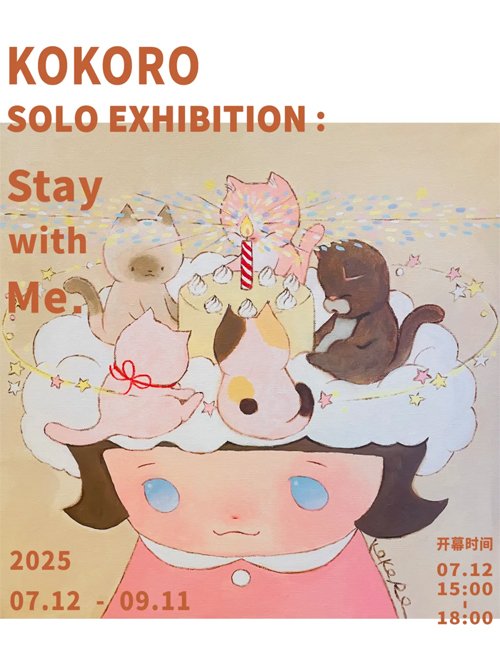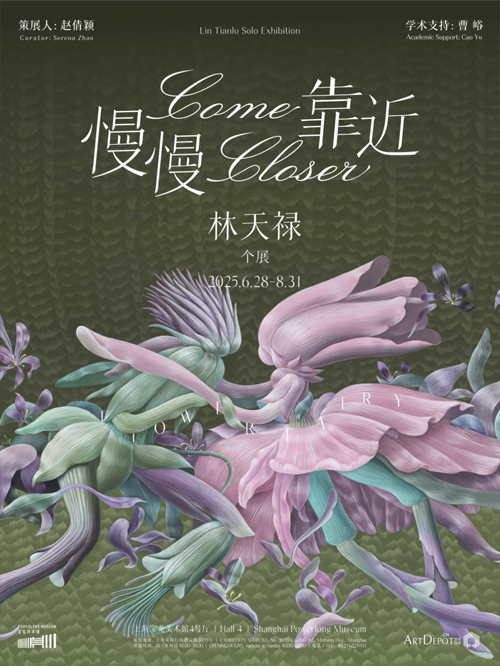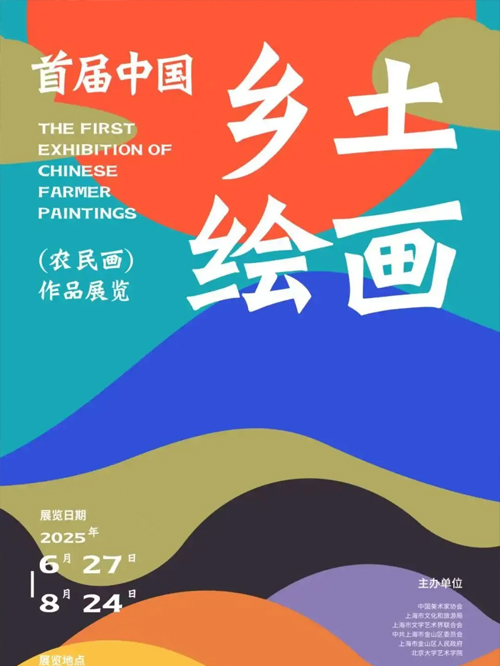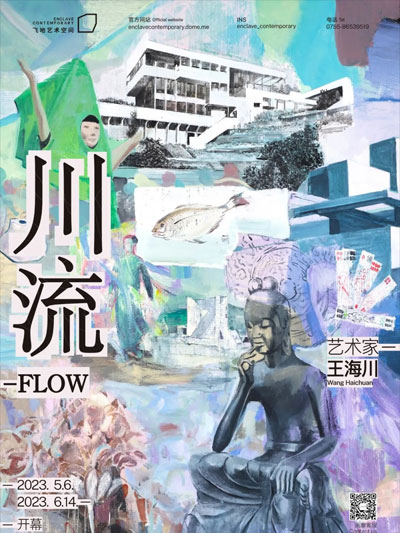王海川的创作样式某种意义上接近于上世纪八九十年代开始,前卫诗歌写作中频繁发生的现象,为避免陈词滥调,一些诗人和艺术家谨慎于或直接拒绝再使用华丽词藻与唯美的视觉去建立对世界的重新组织和洞察,由此,大量密集且互不关联的意象和图景编织起新兴的语言与路径,信息的流动和跳跃看起来突兀动荡,碎片化的拼贴和并置使得画面在形式上荒诞而离奇,常识的逻辑被攻破。然而,借助于内在的修辞与精神重建,作品所呈现的面貌层次丰饶,空间繁复而开阔,常常还具有某种戏剧与寓言的妙然景深,随之带来的,则更加可能是阅读与观看经验的强烈陌生化。在这个意义上,王海川的绘画可以被视为一种“艺术写作”。
作为一位善于捕获和调用图像的艺术家,王海川从时间的沟渠里挖掘素材,在纵深的文化线索中撷取记忆,采集片段,借此追问历史绵延在今天的意义。与此同时,由于身处在复杂境遇的时代进程中,王海川也深度关注海量信息流动贯穿的当下,观察日常生活的资讯变化,那些广泛和即时的社会事件与跌宕现实,在一种横向的扫描和筛选下,记忆得以重现,历史及其对应的回声被加以凝固。
信息的洪流川行不息,汇聚在王海川精心构造的画面中,那些关于建筑的、艺术的、宗教的、文学的乃至史诗般的历史与文化的纵横交错,既形似缝纫机与雨伞在手术台上的巧遇,同时,也形成了艺术家描摹当代的生动风貌。
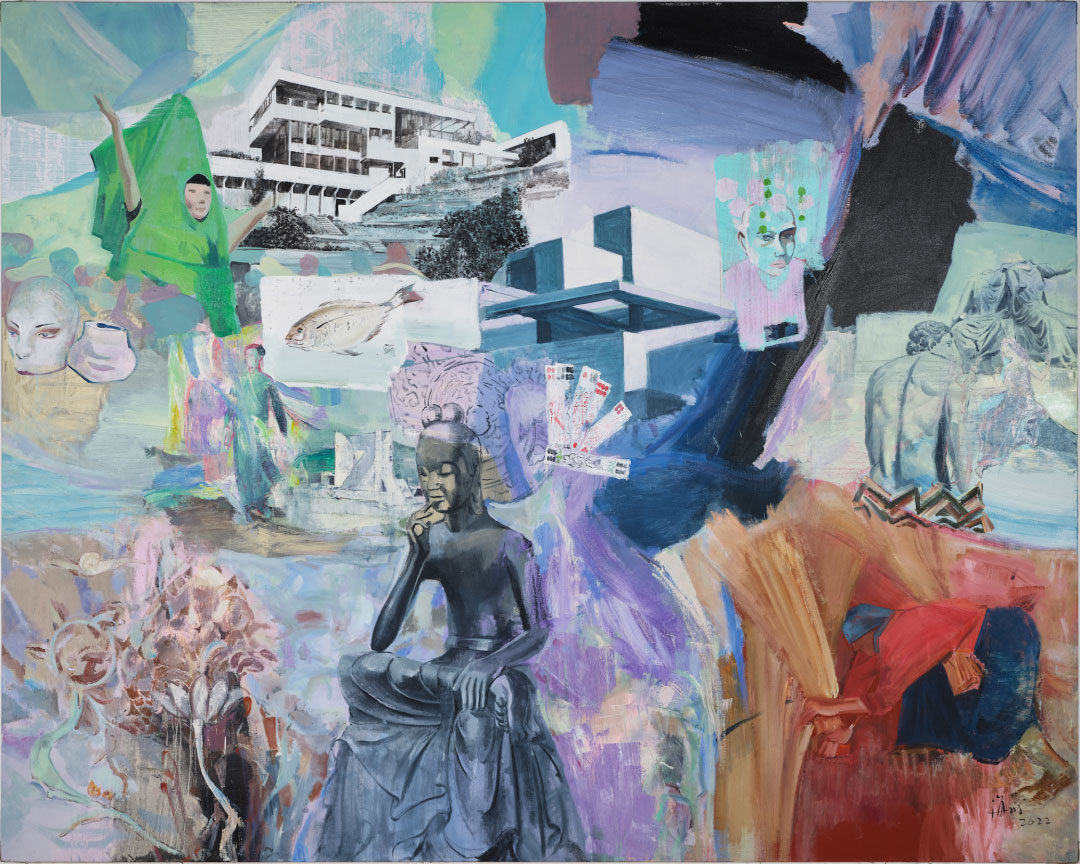
《过往》Past,布面油画 oil on canvas,200 x 250 cm,2022
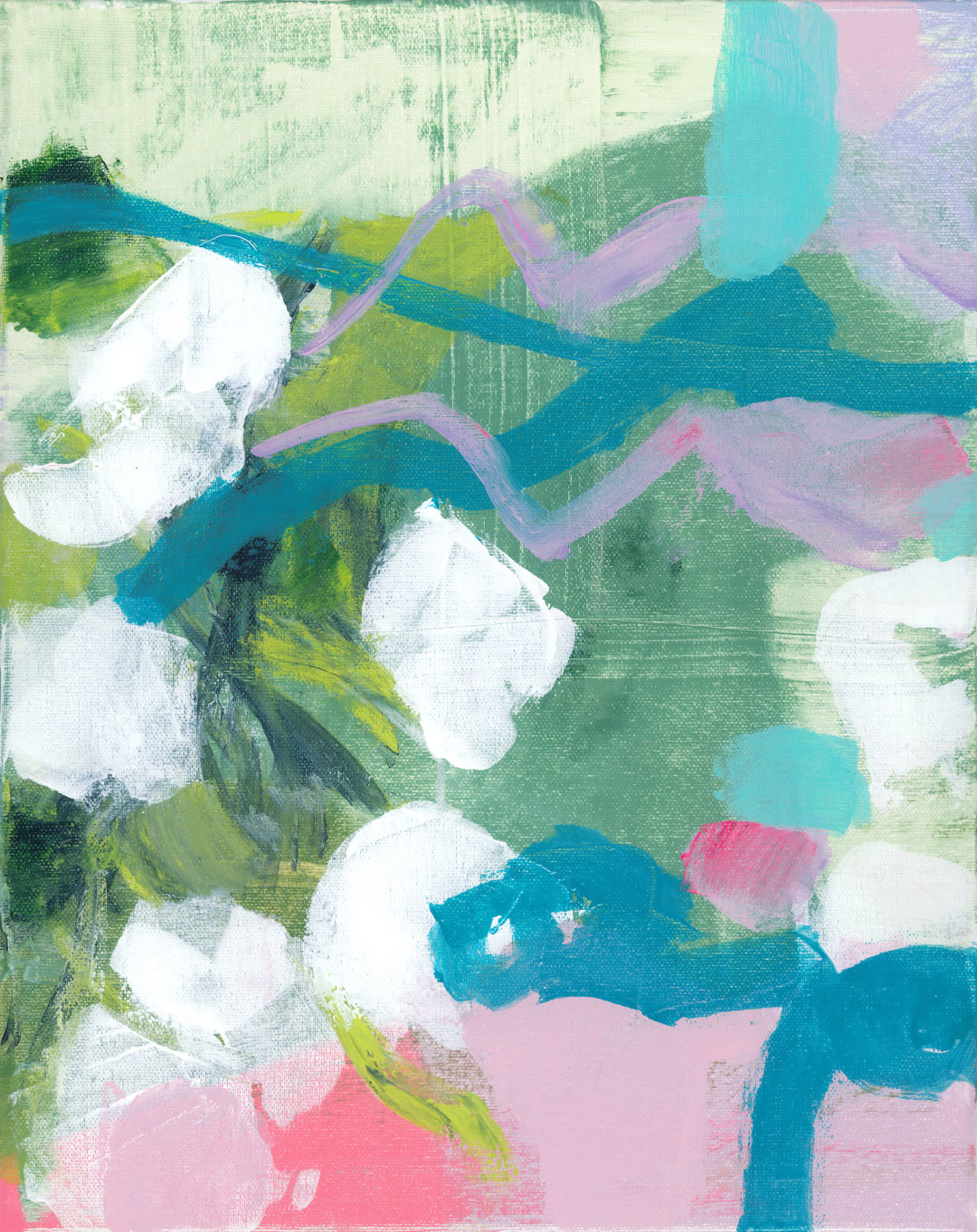
《无题2022-20#》Untitled 2022-20#,布面油画 oil on canvas,50 x 40 cm,2022
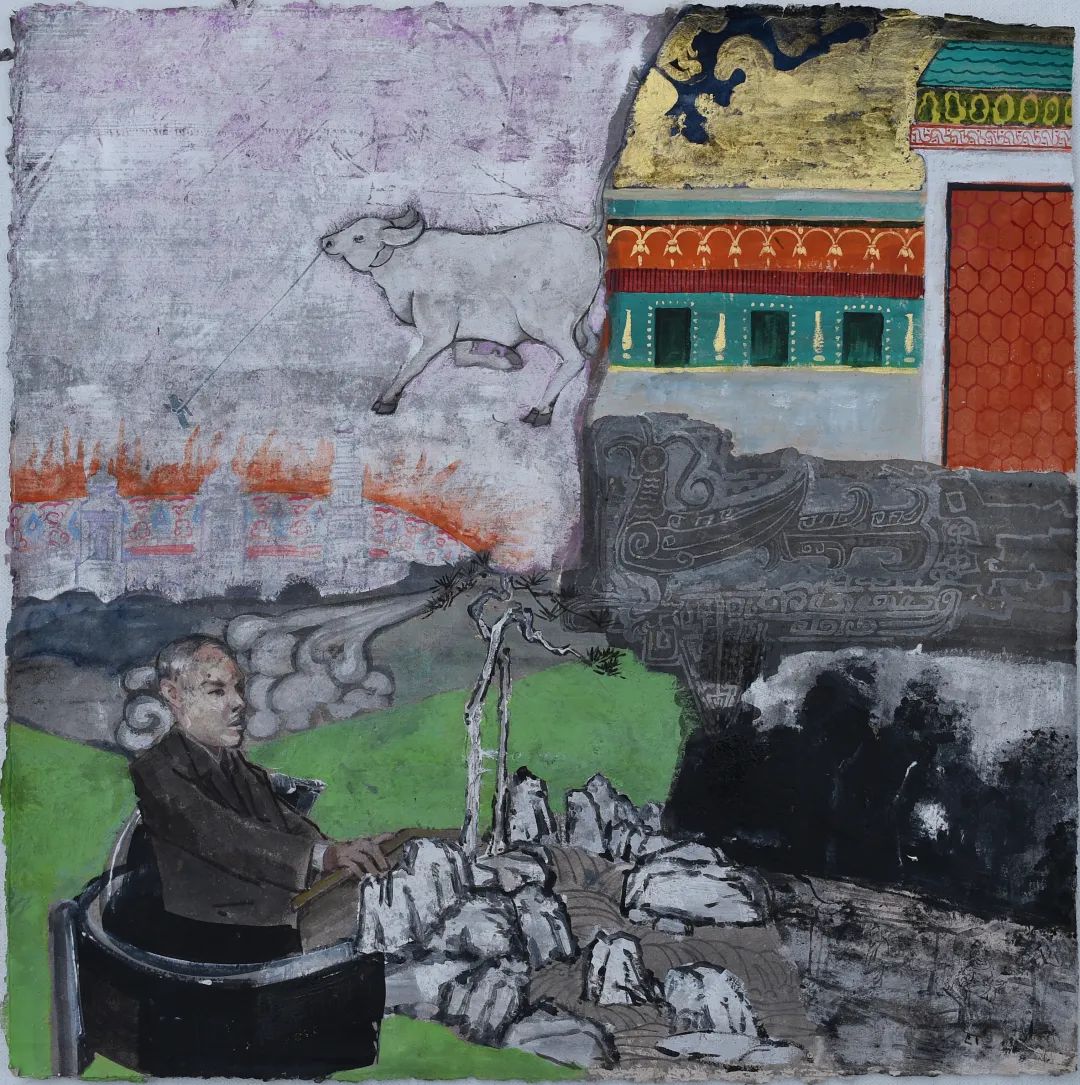
《演讲》Speech,藏纸丙烯 acrylic on Tibetan paper,50 x 50 cm,2014
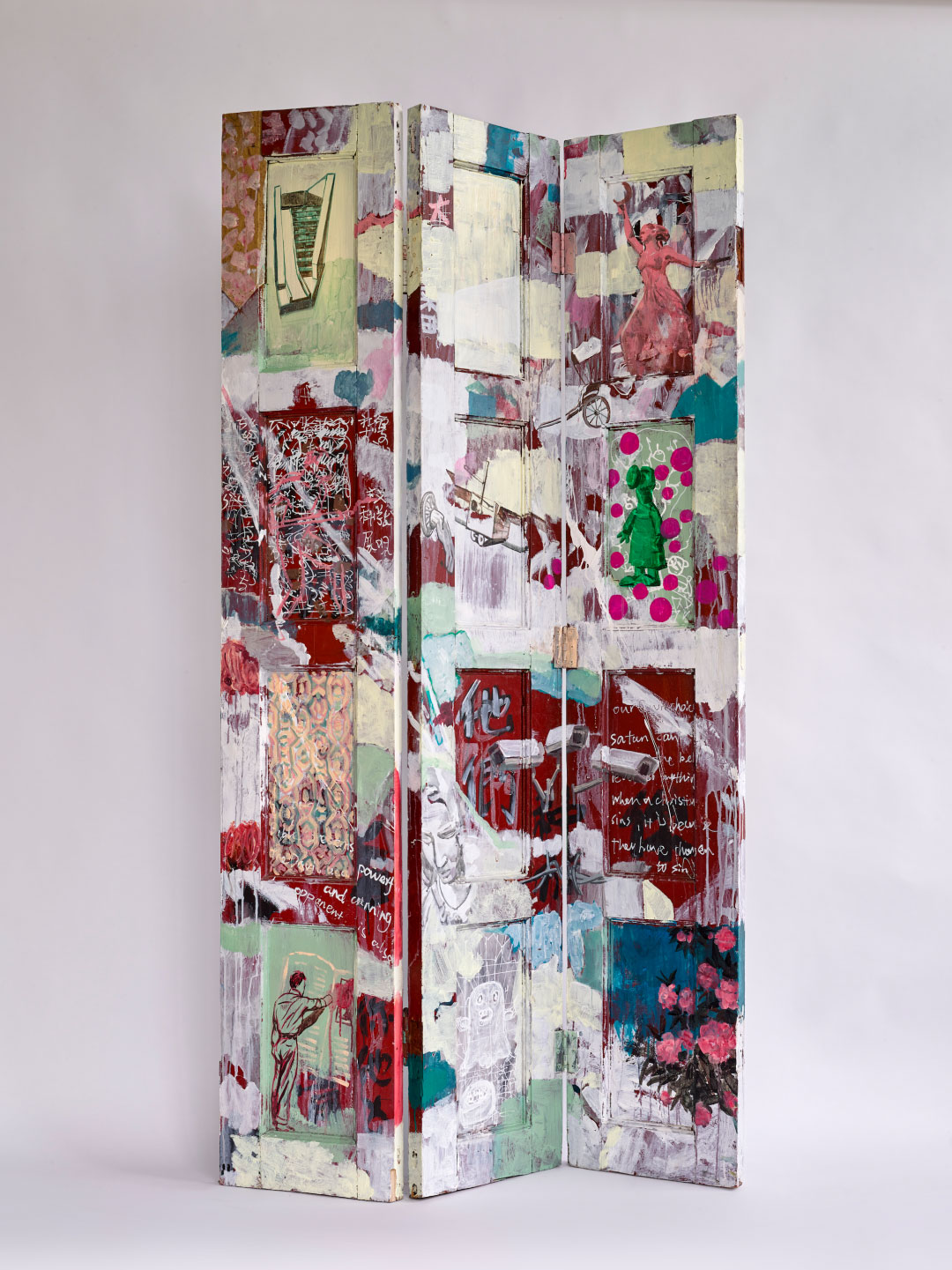
《屏风 2#》Screen 2 #,门板丙烯 acrylic on wooden door,190 x 103 cm,2019
Flow
Wang Haichuan’s creative style is in some ways not unlike a phenomenon common in the avant-garde poetry of the 1980s and 90s, in which poets and artists hoping to avoid clichés and stale expressions either circumspectly or directly rejected the use of beautiful diction and aesthetics to freshly reorganize and understand the world. Thus, a dense but seemingly unrelated collection of concepts and possibilities interwove to produce new language and paths forward; the leaps and flows of information seemed unexpected and turbulent, and the splintered collage of juxtapositions appeared absurd or bizarre as common logic was breached. However, with the aid of its own internal rhetoric and spiritual rebuilding, the features and layers of meaning presented by such works were rich and fertile, in a complex but expansive space that often possessed the subtle depth of the theatrical and allegorical. With this, it became more possible to read or observe the intense estrangement of personal experience. In this sense, Wang Haichuan’s paintings can be seen as a kind of “writing via art.”
As an artist adept at capturing and utilizing images, Wang Haichuan extracts materials from the trenches of time, excavating memories from among the extensive threads of culture, and gathering fragments in order to interrogate the meaning of history as it extends into the present day. Simultaneously, because he lives amid the complex progressions of the current era, Wang Haichuan also pays close attention the present moment as it is permeated with the tremendous flow of news and data, observing the changes in our daily dose of information. With a kind of horizontal scanning and sifting, memory can be reproduced from all the widespread and immediate social events and unconstrained realities, and history and its corresponding echoes can be solidified.
The torrent of information flows unceasingly and is assembled in Wang Haichuan’s meticulously constructed paintings, where in the complex crisscrossing of architecture, art, religion, literature, and even epic poems of history and culture there are many encounters, like a sewing machine and umbrella on an operating table. At the same time, this also forms an artist’s vivid depiction of our contemporary era.
Zhang Er
Translated by Eleanor Goodman
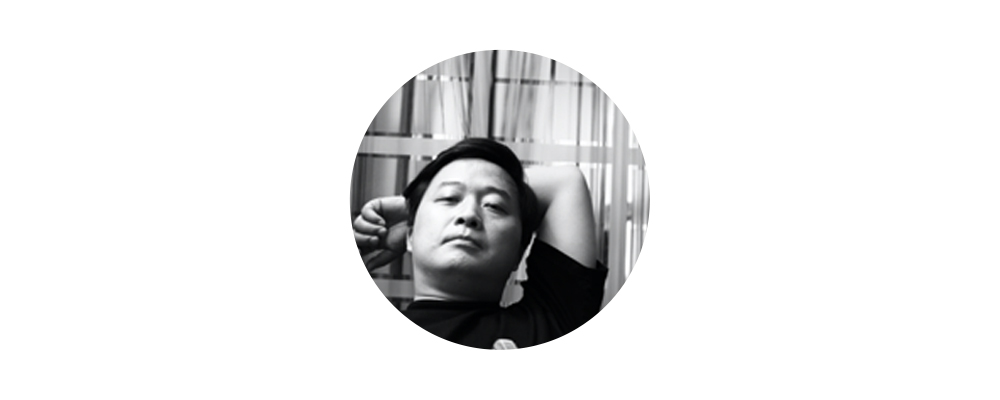
王海川,1968年出生于吉林。1997年毕业于中国重庆四川美术学院油画系。现工作、生活于重庆。
王海川近十年来的艺术创作无疑是丰富且复杂的,包括绘画、装置、摄影、影像及现场活动等多种媒介。他花费数年时间的艺术项目《铜元局》仍在进行中,这个项目关涉到了中国当下最为紧迫的社会问题。尽管我们可以试着描述王海川绘画的一些特征,但是每一幅画到底说了什么,或者说每一幅作品内容都是怎么生成的,这恐怕只能成为一个永远无法解密的秘密,我们看到的只能是一个又一个碎片化的图像,以及这些碎片图像和图像之间的差距形成的一种不可估量性。
王海川主要个展包括:《川流》,飞地艺术空间,深圳(2023);《剩余》,艺术仓库艺术中心,北京(2019);《雨伞,缝纫机在手术台上的偶遇》,ART+画廊,上海(2017);《中间风景/王海川,张武运双个展》,元画廊,上海(2015);《铜元局——七天》,重庆器空间,重庆(2012);《铜元局——16.9M²》(外省青年),重庆铜元局现场,重庆(2011);《藏纸》,Zdeněk Sklenář画廊,布拉格(2010);《居 · 注》,高地画廊,北京(2010)等。主要群展包括:《北京当代·艺术博览会 — 重聚》,北京农业展览馆,北京(2023);《当媒介成为日常》,重庆星汇当代美术馆(GCA),重庆(2018);《现实尴尬》,杜塞尔多夫文化局展厅,杜塞尔多夫(2017);《“何不在问”第十一届上海双年展》,上海当代博物馆美术馆,上海(2017);《惊奇房间第二回》,南京大学美术馆,南京(2016);《外销画项目》,时代美术馆,广州(2015);《圣·莫里茨艺术大师展》,圣·莫里茨,瑞士(2013)等。
Wang Haichuan, was born in Jilin in 1968. He graduated from the Oil Painting Department of Sichuan Fine Arts Institute in 1997. Now, he lives and works in Chongqing.
In the past decade, Wang Haichuan has created a rich and complicated oeuvre of works that included painting, installation, photography, videos and on-site performances. Up until today, the artist is involved into one of the on-site art projects that went on for several years and mainly evolved around some of the pressing socials issues in China. Incomprehensible became a distinctive feature of today’s artworks or a standard one of modernist art. Although we could try to decipher some of Wang Haichuan’s imagery, at the end of the day, I am afraid we will never really comprehend what exactly each of them is saying or how exactly each one of them was generated. We are left with no choice but to contemplate separate fragments of Wang Haichuan’s imagery. The fragments and the distance between the fragments make it difficult for us to grasp the meaning of the imagery.
Wang Haichuan’s solo exhibition include: Flow, Enclave Contemporary, Shenzhen (2023); REMAINDER, ArtDepot Center, Beijing (2019); The Fortuitous Encounter of a Sewing Machine and an Umbrella on a Dissecting Table, Art+ Shanghai Gallery, Shanghai (2017); Intermediate & Sceneries, Meta Gallery, Shanghai (2015); Tongyuanju 7 Days, Organhaus Art Space, Chongqing (2012); Tongyuanju 16.9M², (Provincial Youth), Tongyuanju, Chongqing (2011); Tibetan Paper, Zdeněk Sklenář Gallery, Purage (2011); The Note of Staying, Gaodi Gallery, Beijing (2020), etc. Major group exhibitions include: Beijing Contemporary Art Expo REUOION, National Agriculture Exhibition Center, Beijing (2023); Questioning Photography Now, GCA, Chongqing (2018); REALISTIC EMBARRASSMENT, Kulturamt der Landeshauptstadt Düsseldorf, Düsseldorf (2017); 11th Shanghai Biennale, Power Station of Art Shanghai, Shanghai (2017); Silk Road International, Art Museum of Nanjing University of the Arts, Nanjing (2016); Export Painting, Guangdong Times Museum, Guangzhou (2015); St. Moritz Art Masters, St. Moritz, Engadin (2013), etc.
